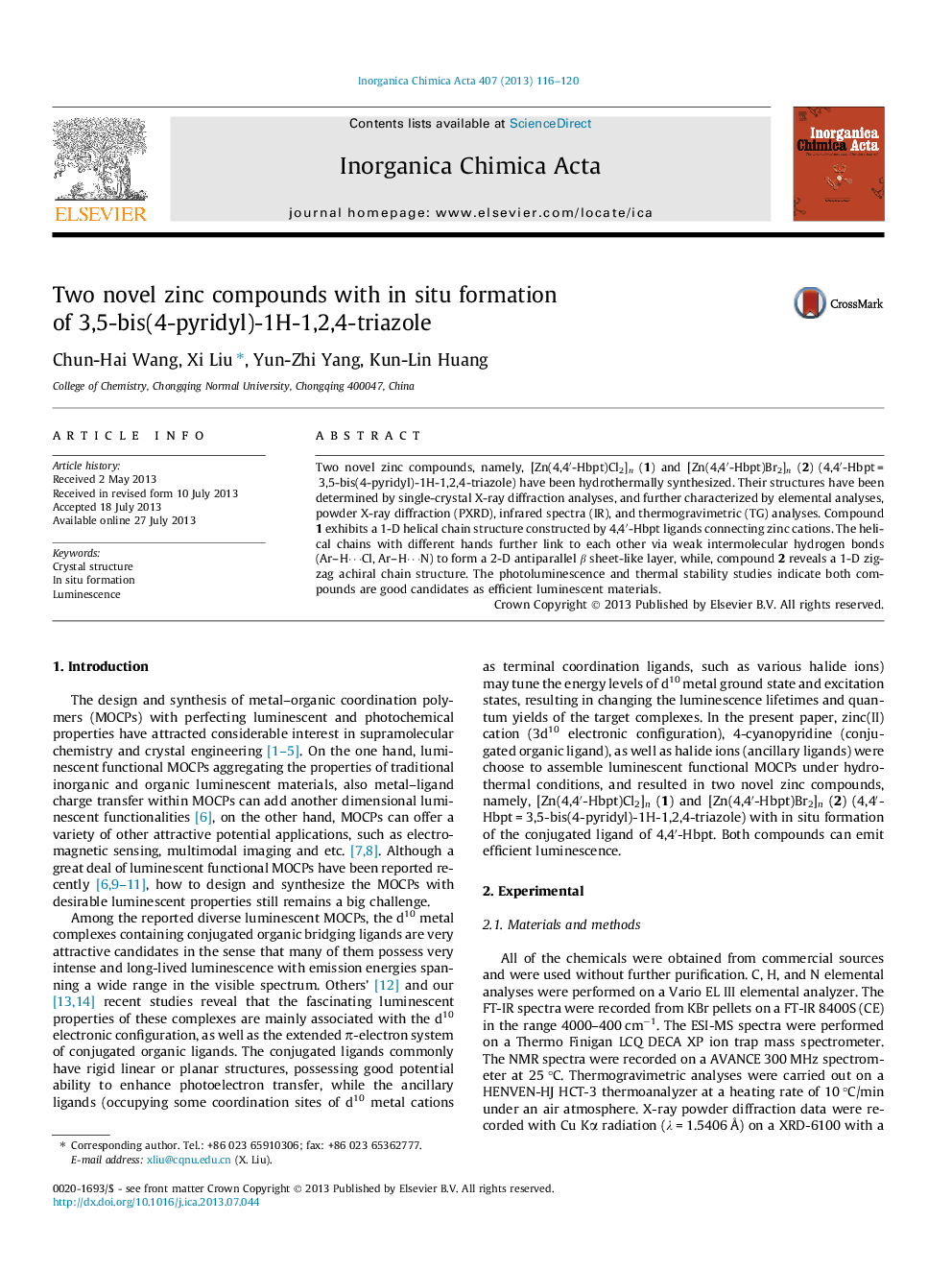| Article ID | Journal | Published Year | Pages | File Type |
|---|---|---|---|---|
| 1312260 | Inorganica Chimica Acta | 2013 | 5 Pages |
•Two novel zinc compounds with diverse structures were synthesized via in situ ligand formation reactions.•Both compounds can emit strong fluorescent emissions.•Both compounds are very stable under 400 °C.
Two novel zinc compounds, namely, [Zn(4,4′-Hbpt)Cl2]n (1) and [Zn(4,4′-Hbpt)Br2]n (2) (4,4′-Hbpt = 3,5-bis(4-pyridyl)-1H-1,2,4-triazole) have been hydrothermally synthesized. Their structures have been determined by single-crystal X-ray diffraction analyses, and further characterized by elemental analyses, powder X-ray diffraction (PXRD), infrared spectra (IR), and thermogravimetric (TG) analyses. Compound 1 exhibits a 1-D helical chain structure constructed by 4,4′-Hbpt ligands connecting zinc cations. The helical chains with different hands further link to each other via weak intermolecular hydrogen bonds (Ar–H⋯Cl, Ar–H⋯N) to form a 2-D antiparallel β sheet-like layer, while, compound 2 reveals a 1-D zigzag achiral chain structure. The photoluminescence and thermal stability studies indicate both compounds are good candidates as efficient luminescent materials.
Graphical abstractTwo novel zinc compounds with 4,4′-Hbpt ligand have been synthesized via in situ ligand formation reaction and their structures were characterized, which both can emit efficient luminescence.Figure optionsDownload full-size imageDownload as PowerPoint slide
